If your dog suddenly becomes afraid to go outside, it can be a puzzling situation. Your typically brave and confident furry companion may now be shaking at the idea of stepping outdoors. What could be causing this sudden fear? Is it the rustling leaves, the mailman, or maybe a hidden monster? Don’t worry, I’m here to help uncover why your dog is scared to go outside suddenly and assist in getting them back to their happy, tail-wagging selves!
Key Takeaways
- Observe Your Dog: Pay attention to signs of fear in your dog such as trembling, hiding, or excessive panting when it’s time to go outside. Understanding these signs can help you address the issue effectively.
- Consider Medical Causes: If your dog suddenly becomes scared to go outside, consult with a veterinarian to rule out any underlying medical conditions that may be contributing to their fear.
- Weather Matters: Be mindful of how weather conditions like thunderstorms or strong winds can impact your dog’s anxiety levels. Adjust your outdoor routine accordingly to help your dog feel more comfortable.
- Combat Boredom: Boredom can sometimes trigger fear in dogs. Engage your pet in stimulating activities and provide mental enrichment to alleviate boredom-related fears.
- Give Attention: Lack of attention and interaction can lead to fear and anxiety in dogs. Spend quality time with your pet, offering reassurance and positive experiences to build their confidence.
- Help with Desensitization: Gradually expose your dog to the outdoors using desensitization techniques. Start small and reward calm behavior to help them overcome their fear over time.
Understanding Dog Fear Signs

Recognize Signs
Dogs show signs of fear through various behaviors such as trembling, cowering, or trying to hide. Observing these cues can help you understand when your dog is feeling anxious.
One common sign of fear in dogs is trembling, where their body shakes involuntarily due to stress or anxiety. A fearful dog may exhibit avoidance behavior by hiding in secluded areas.
Understand Body Language
When a dog is scared, they often display body language cues that indicate their discomfort. Look for flattened ears, a tucked tail, or a hunched posture as signs of fear.
A fearful dog might also exhibit submissive body language like lip licking, yawning, or avoiding eye contact. These behaviors signal their unease and need for reassurance.
Notice Behavioral Changes
Fearful dogs may demonstrate behavioral changes such as excessive barking, growling, or even aggression when they feel threatened. It’s crucial to address these behaviors with patience and understanding.
It’s essential to provide a safe environment for a scared dog and avoid forcing them into situations that trigger their fear response. By creating a calm and supportive atmosphere, you can help your pet overcome their anxieties gradually.
Medical Reasons Behind Fear
Arthritis
Arthritis can be a significant reason behind a dog’s sudden fear of going outside. This condition causes joint pain, making movement uncomfortable for your furry friend. The discomfort associated with arthritis can lead to reluctance in engaging in physical activities, including going outdoors.
Seeking veterinary advice is crucial when suspecting arthritis as the source of your dog’s fear. A vet can conduct a thorough examination to diagnose the condition accurately. They may recommend treatment options such as pain management medications or tailored physical therapy sessions to alleviate your dog’s discomfort and fear.
Hip Dysplasia
Hip dysplasia is another common cause that can trigger fear in dogs when it comes to outdoor activities. This condition affects the hip joints, causing pain and difficulty in movement. Dogs experiencing hip dysplasia may exhibit signs of fear or hesitation due to the discomfort they feel while walking or running.
It is essential to consult a veterinarian promptly if you suspect hip dysplasia as the underlying source of your dog’s sudden fear of going outside. Through diagnostic tests like X-rays, the vet can confirm the presence of hip dysplasia and recommend suitable treatment options. These may include medications for pain relief, weight management strategies, or even surgical interventions for severe cases.
Personal Insights
I remember when my own dog started showing signs of fear towards outdoor activities. After consulting our vet, we discovered that she was suffering from arthritis. With the right medication and physical therapy, she regained her confidence and joy in exploring the outdoors again.
Weather Impact on Dog Anxiety
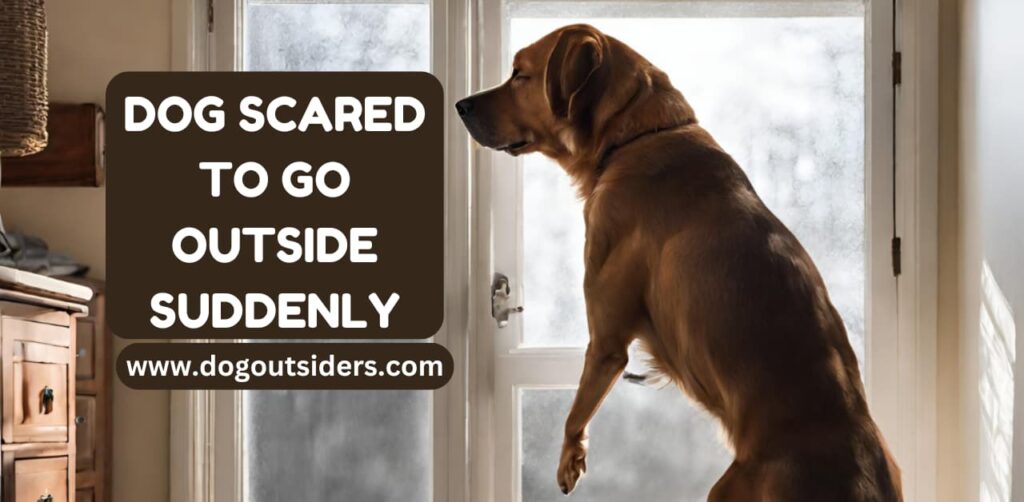
Shelter
Ensure your dog has access to shelter during extreme weather conditions. This can be a cozy dog house or a covered area in your yard. Dogs may get anxious during thunderstorms or heavy rain, so providing a safe space for them can alleviate their fears. If your dog is scared to go outside due to rain, ensure they have a dry spot to retreat to.
Clothing
In colder climates, consider dressing your dog in appropriate clothing. Dog jackets or sweaters can help keep them warm and comfortable when going outside in chilly or wet weather. Keep an eye on your furry friend’s body language when they are outdoors. If they seem uncomfortable or anxious due to the weather, it might be time to bring them back inside.
Boredom as a Fear Trigger
Interactive Activities
Engage your dog in interactive outdoor activities to combat boredom and fear of going outside. Take them for walks, play fetch, or visit a dog park to stimulate their mind and body.
Introduce new toys or games to pique your dog’s interest and distract them from their fear. Toys that dispense treats or make noise can be exciting and engaging for your furry friend.
Mental Stimulation
Incorporate mental challenges such as puzzle feeders to keep your dog entertained and mentally sharp. These feeders require problem-solving skills, keeping your dog engaged and focused.
Try hiding treats around the house or yard for your dog to find. This activity not only provides mental stimulation but also helps build confidence in exploring new environments.
Personal Insights
I have found that incorporating clicker training into our daily routine has significantly reduced my dog’s anxiety about going outside. The positive reinforcement from the clicker helps build their confidence.
Lack of Attention and Fear
Consistent Attention
Provide consistent attention to your dog to alleviate fears and prevent anxiety triggers. Dogs thrive on human interaction, so spending quality time with them is crucial. Establish a routine that includes playtime, walks, and cuddles.
Maintaining a regular schedule helps your dog feel secure and loved. Consistent attention can help build trust and reduce fear responses in stressful situations. Engage in activities that your dog enjoys to strengthen your bond.
Importance of Companionship
Human interaction plays a vital role in your dog’s emotional well-being. Companionship helps alleviate anxiety and fear by providing comfort and security. Spend time engaging with your pet through play, training, or simply being present.
Spending time together strengthens the bond between you and your furry friend. My personal experience has shown me that dogs respond positively to affectionate gestures and reassuring words. Companionship is key to helping your dog feel safe and secure.
Tips for Reluctant Dogs Outdoors
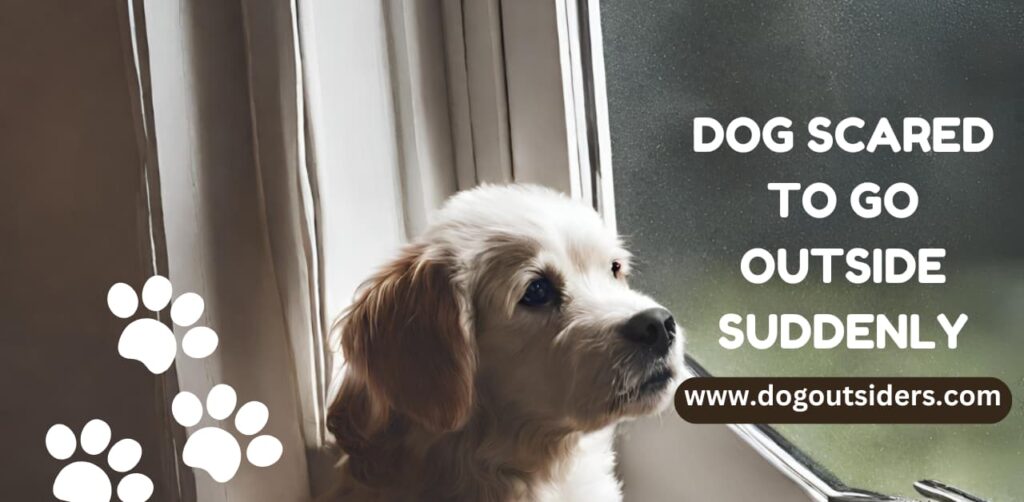
Start Slowly
Encourage your dog with patience and consistency. Begin with short outdoor sessions to acclimatize them gradually. Increase the duration as they grow more comfortable.
I remember when my old dog was scared to go outside suddenly. It took time, but with baby steps, she eventually enjoyed our walks in the park.
Positive Reinforcement
Motivate your furry friend using positive reinforcement techniques. Reward good behavior with treats or praise to associate going outside with positivity.
When my dog was hesitant to go outdoors, I used treats and lots of encouragement to help her overcome her fear. It made a significant difference in her confidence levels.
Desensitization Techniques for Dogs
Gradual Exposure
Implement desensitization techniques by gradually exposing your dog to the feared stimuli. Start at a distance where your dog remains calm and increase exposure slowly over time. For example, if your dog is scared of cars, start by sitting near a quiet road before moving closer as they become more comfortable.
Safe Environment
Create a safe and controlled environment for desensitization training to ensure your dog feels secure during the process. Remove any potential triggers that may cause fear or distress to prevent setbacks in their progress. Providing a familiar and comfortable space can help reduce anxiety levels.
I remember when I used gradual exposure to help my own dog overcome her fear of thunderstorms. By starting with playing recordings of distant thunder at a low volume and gradually increasing it, she learned to stay calm during storms. It was rewarding to see her progress and become less anxious over time.
Rewarding Calm Behavior
Reward calm behavior during desensitization exercises to reinforce positive associations with the feared stimuli. Use treats, praise, or toys to encourage your dog when they exhibit relaxed behavior in the presence of what scares them. This positive reinforcement helps them understand that staying calm leads to rewards.
During desensitization training for my dog’s fear of strangers, I made sure to reward her whenever she remained calm around new people. Over time, she started associating meeting new individuals with positive experiences and became more confident in social situations.
Counterconditioning Methods for Dogs
Positive Associations
Create positive associations by pairing fearful situations with enjoyable experiences. For instance, if your dog is scared to go outside suddenly, offer tasty treats or play their favorite game near the door.
To reinforce this positive connection, every time your dog goes outside without fear, reward them with a treat. Over time, they will start associating going outside with something pleasant and rewarding.
Gradual Exposure
Gradual exposure is key in counterconditioning. Start by exposing your dog to the trigger at a distance where they feel comfortable and relaxed. Slowly decrease the distance as they become more at ease.
If your dog is scared of loud noises outdoors, begin by playing recordings of those sounds at a low volume indoors. As they get used to it, increase the volume gradually.
Consistent Reinforcement
Consistency is crucial in counterconditioning. Ensure that every interaction with the trigger results in a positive experience for your dog.
For example, if your dog is scared of other dogs on walks, every successful encounter should be followed by praise and treats. This consistency helps build their confidence over time.
Personal Note:
When I was helping my rescue dog overcome his fear of strangers, I made sure to always carry his favorite treats during walks. Each time he greeted someone calmly, I praised him and gave him a treat. This consistent positive reinforcement helped him feel more comfortable around new people.
Patience and Persistence
Counterconditioning takes time and patience. Remember that each dog progresses at their own pace, so avoid rushing the process.
If your dog shows signs of fear or discomfort during training sessions, take a step back and adjust the intensity or duration to prevent overwhelming them.
Professional Guidance
Seek advice from a veterinarian or professional trainer if you encounter challenges during counterconditioning. They can provide tailored guidance based on your dog’s specific needs and behaviors.
A professional can also help identify any underlying issues contributing to your dog’s fear and develop a customized counterconditioning plan.
Nighttime Anxiety Solutions
Calming Bedtime Routine
Establishing a calming bedtime routine can significantly help in alleviating nighttime anxiety in dogs. Begin by engaging in calming activities such as gentle play or a short walk before bedtime. This can help reduce pent-up energy and promote relaxation.
Consider incorporating positive reinforcement techniques during the bedtime routine to create a positive association with going to sleep. Providing comfort items such as a favorite blanket or toy can also offer a sense of security and comfort to your dog.
Comfortable Sleeping Environment
Creating a comfortable sleeping environment is essential for addressing nighttime anxiety in dogs. Ensure that your dog’s sleeping area is quiet, dark, and free from distractions. Providing a cozy bed or crate can offer a safe space for your dog to retreat to when feeling anxious.
Consider adjusting the room temperature to ensure it is comfortable for your dog. Using white noise machines or calming music can help drown out external noises that may trigger anxiety in your dog.
Calming Aids Usage
In some cases, incorporating calming aids into your dog’s nighttime routine can be beneficial in reducing anxiety. Products such as pheromone diffusers, which release calming pheromones, can help promote relaxation and reduce stress levels in dogs.
Another option to consider is playing calming music specifically designed for dogs. The soothing sounds and rhythms can have a calming effect on your pet, helping them relax and feel more at ease during bedtime.
Conclusion:
Understanding your dog’s fears is crucial. Medical issues, weather conditions, boredom, and lack of attention can all contribute to their anxiety. By implementing tips for outdoor activities, desensitization techniques, and counterconditioning methods, you can help your furry friend overcome their fears. Nighttime anxiety solutions are also available to ensure a peaceful night for both you and your pet. Remember, patience is key in helping your dog feel safe and comfortable outdoors.
Take the time to observe and understand your dog’s behavior. With love, support, and the right strategies in place, you can help your pet conquer their fears and enjoy the great outdoors once again.
FAQ’s:
Dogs may exhibit fear through behaviors like trembling, hiding, excessive panting, yawning, or avoiding eye contact. Understanding these signs can help address their anxiety effectively.
Extreme weather conditions such as thunderstorms or heavy rain can trigger fear and anxiety in dogs. Loud noises, strong winds, or sudden changes in temperature may make them reluctant to go outside.
Desensitization involves gradually exposing the dog to the source of fear in a controlled manner. By slowly increasing exposure while rewarding calm behavior, the dog learns to be less fearful over time.
Counterconditioning aims to change the dog’s negative response to a particular stimulus by associating it with something positive. For example, pairing scary outdoor experiences with treats can help create positive associations and reduce fear.
Encourage outdoor activities that your dog enjoys, use positive reinforcement techniques, create a safe environment, and be patient and understanding. Gradual exposure and consistency can help build confidence and reduce fear of going outside.

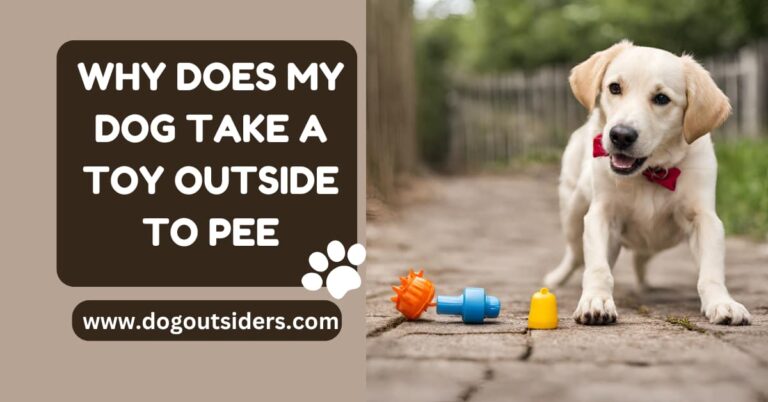
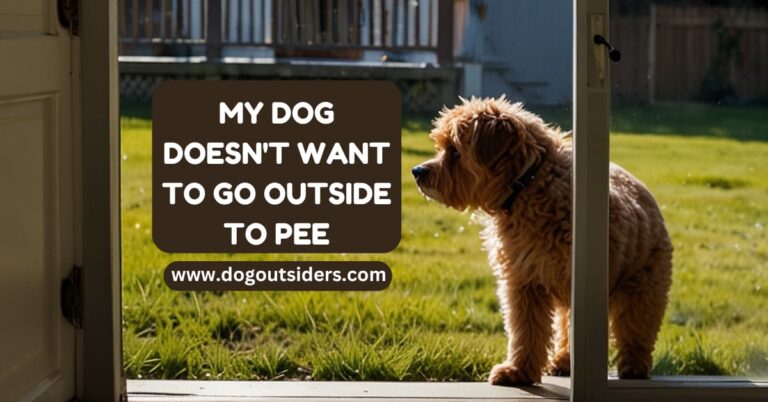
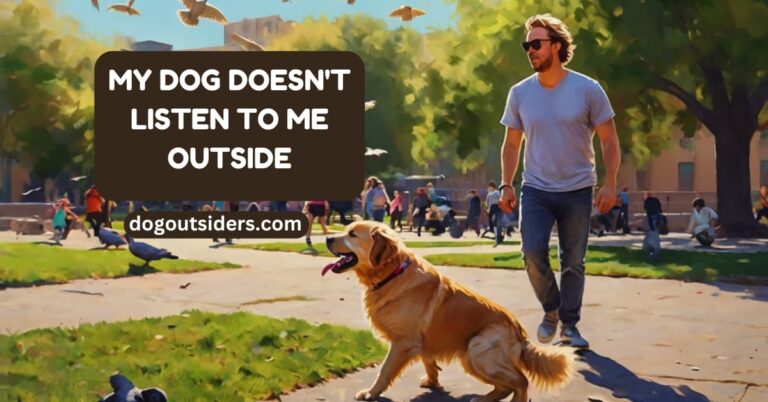
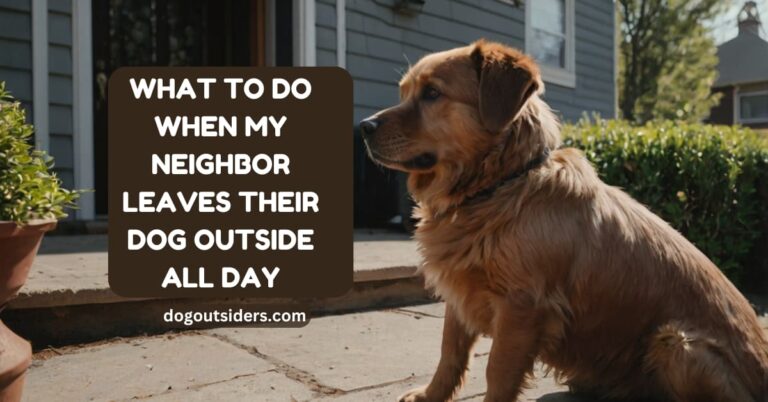
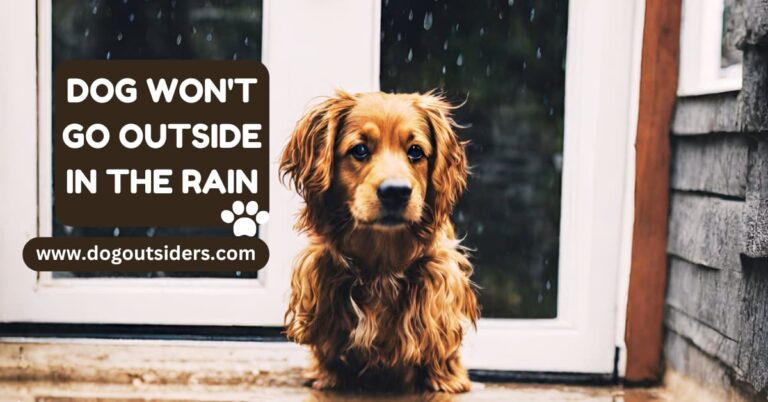

One Comment